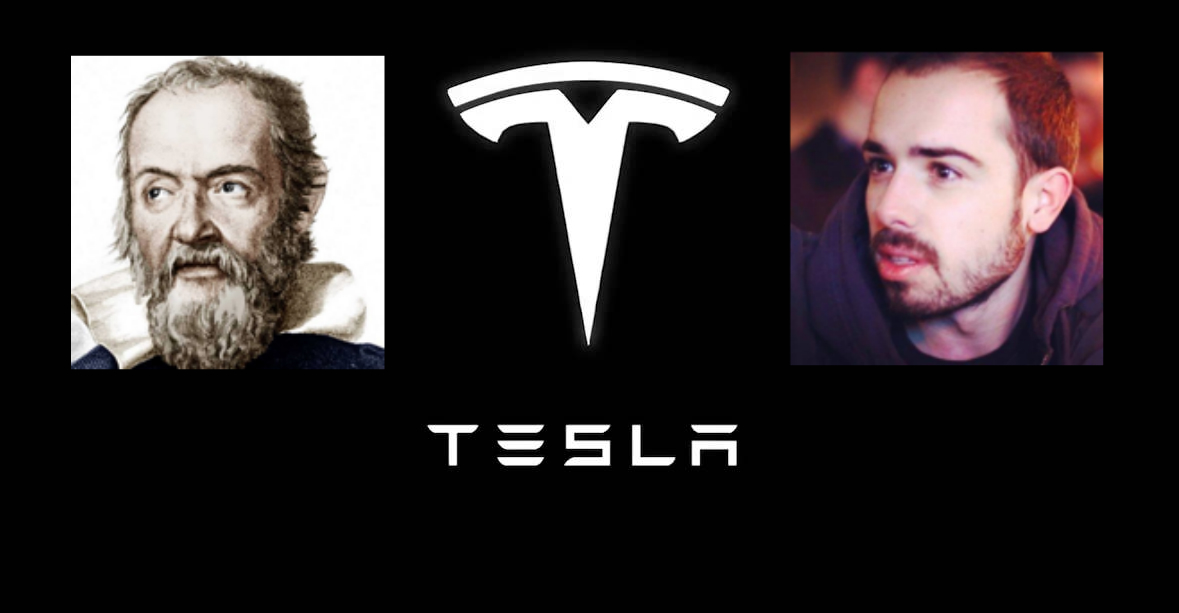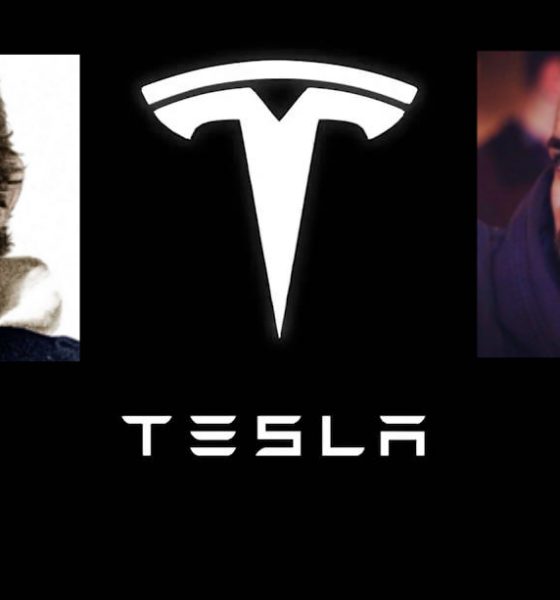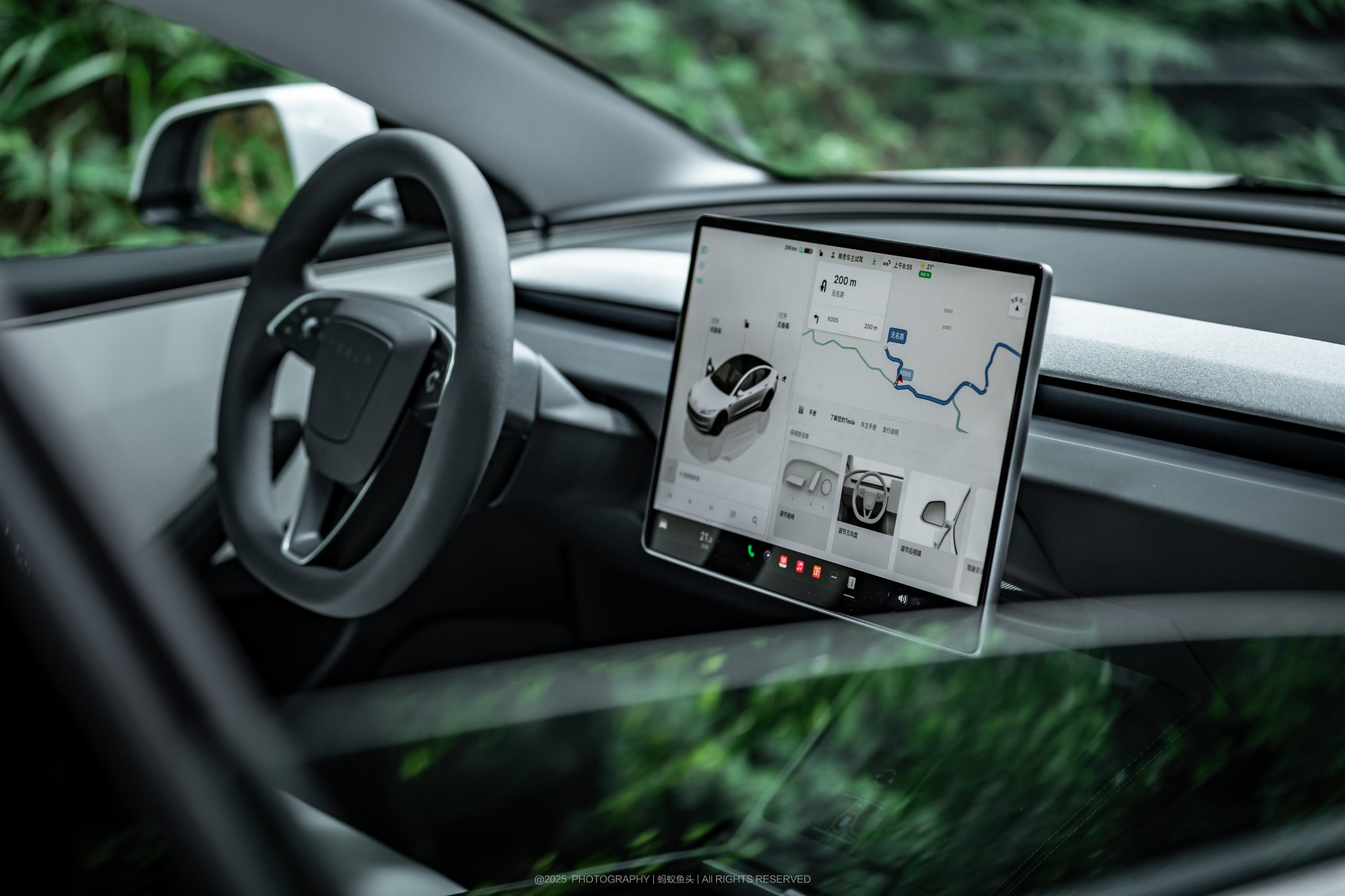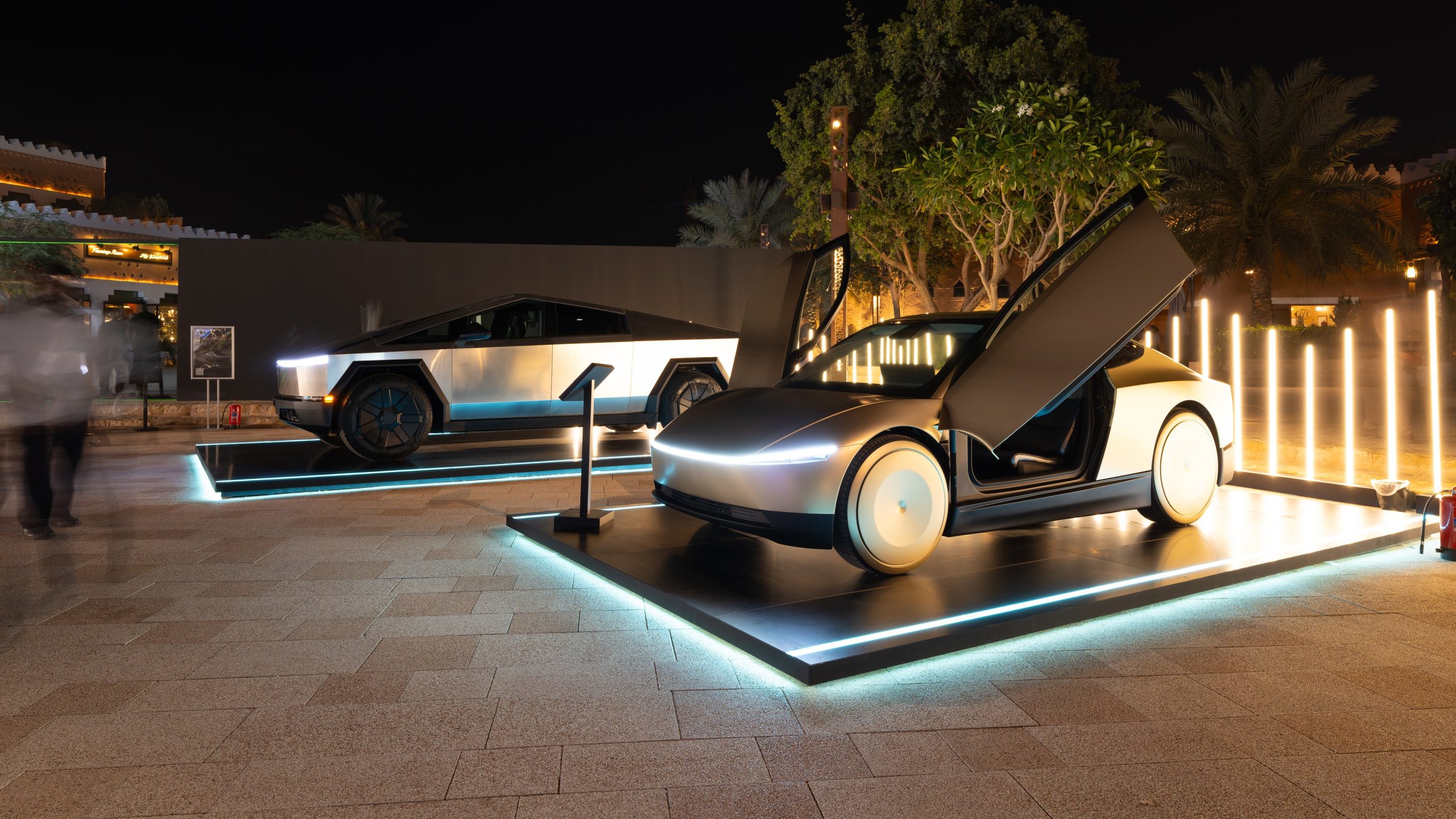

Investor's Corner
Tesla short-seller and TSLA bull face off in classic Bull vs. Bear debate
The Quoth the Raven podcast recently hosted a debate between notable Tesla bear and SeekingAlpha contributor Montana Skeptic and Tesla bull and YouTube host Galileo Russell. Over the hourlong session, both bull and bear discussed issues from Tesla’s financial status, competition from other carmakers, and the company’s future.
MontanaSkeptic1 is an outspoken Tesla critic and a supporter of the bear thesis against the company. An interview with QTR on Seeking Alpha states that Montana has a JD from Yale Law School and manages a $1 billion portfolio. After graduating from Yale, Montana has 30 years experience as a trial lawyer. Montana also notes that he did not take a bearish stance on Tesla from the start. Rather, he states that after reading the company’s filings, he was reminded of Enron, an American energy, and commodities company that went defunct in 2001 after a scandal caused by accounting fraud.
Galileo Russell, on the other hand, is 25 years old but is a self-confessed “finance geek” who has a bullish stance on Tesla. Galileo studied Finance & Entrepreneurship at New York University – Leonard N. Stern School of Business. He currently runs a YouTube channel called HyperChange TV, where he discusses stocks such as TSLA, SNAP, AMZN and other tech companies. Galileo first made waves after he predicted Amazon’s acquisition of Whole Foods months before it was announced, but more recently rose to fame after having 23 minutes of airtime with Elon Musk during Tesla’s Q1 2018 earnings call.
The debate between the Tesla bull and bear adopted a structured format, with Montana and Galileo getting an equal amount of time to state their case for a particular topic. The hourlong debate started with a discussion on whether Tesla’s CapEx would be sufficient for the company’s future projects like the Model Y, Tesla Semi, Solar Roofs and its other upcoming products, followed by Tesla’s market share and sales in the United States. Elon Musk’s behavior on social media was also discussed. During these rounds, each side presented a number of compelling arguments, with Montana Skeptic pointing out Tesla’s losses every quarter and Galileo arguing that becoming a profitable car maker requires a heavy time investment. Both reached a consensus that Elon Musk should be more restrained on Twitter.
Ultimately, however, the Tesla bull focused on the long-term prospects of Tesla, as well as the potential of the company in the future, while the bear case is founded on skepticism that Tesla could deliver a $35,000 Model 3, the China Gigafactory, and compete with profitable automakers that have a proven history of manufacturing at scale. The final arguments of Montana and Galileo summed up their stance on the electric car maker.
“I think Tesla is just extraordinarily weak. It lives from capital raise to capital raise. But for a capital raise, it is always on the brink of insolvency. I think that other automakers have a huge advantage. They have a portfolio of products, and those products are largely profitable, and the fact that they are compelled to make EVs that don’t make economic sense, and would never be bought other than as niche performance products, absent huge subsidies. That makes a huge difference. They would be able to outpace Tesla. The interior of the Model 3 has become tired. It was never all that luxurious, and I think it won’t be the aspirational car much longer, especially when these other cars hit the market, and this is happening,” Montana said.
“If you see Tesla’s business unfold and that’s why if you compare them to all the old metrics and look at how much money they’re losing now, you’ve missed the entire story because you’re failing to appreciate just how rapidly Tesla is growing. This is a Silicon Valley company. Software is eating the world. Software is eating every single aspect and niche of the way we build cars, what’s in cars, how they run, how we interact with our cars. This is a totally, fundamentally different set of skills than building an internal combustion engine,” Galileo said.
Listen to the full Montana Skeptic vs. Galileo Russell debate in a recording of the Quoth the Raven podcast below.
https://www.youtube.com/watch?time_continue=190&=&v=LqKEP6j0qe0

Investor's Corner
SpaceX IPO is coming, CEO Elon Musk confirms
However, it appears Musk is ready for SpaceX to go public, as Ars Technica Senior Space Editor Eric Berger wrote an op-ed that indicated he thought SpaceX would go public soon. Musk replied, basically confirming it.

Elon Musk confirmed through a post on X that a SpaceX initial public offering (IPO) is on the way after hinting at it several times earlier this year.
It also comes one day after Bloomberg reported that SpaceX was aiming for a valuation of $1.5 trillion, adding that it wanted to raise $30 billion.
Musk has been transparent for most of the year that he wanted to try to figure out a way to get Tesla shareholders to invest in SpaceX, giving them access to the stock.
He has also recognized the issues of having a public stock, like litigation exposure, quarterly reporting pressures, and other inconveniences.
However, it appears Musk is ready for SpaceX to go public, as Ars Technica Senior Space Editor Eric Berger wrote an op-ed that indicated he thought SpaceX would go public soon.
Musk replied, basically confirming it:
As usual, Eric is accurate
— Elon Musk (@elonmusk) December 10, 2025
Berger believes the IPO would help support the need for $30 billion or more in capital needed to fund AI integration projects, such as space-based data centers and lunar satellite factories. Musk confirmed recently that SpaceX “will be doing” data centers in orbit.
AI appears to be a “key part” of SpaceX getting to Musk, Berger also wrote. When writing about whether or not Optimus is a viable project and product for the company, he says that none of that matters. Musk thinks it is, and that’s all that matters.
It seems like Musk has certainly mulled something this big for a very long time, and the idea of taking SpaceX public is not just likely; it is necessary for the company to get to Mars.
The details of when SpaceX will finally hit that public status are not known. Many of the reports that came out over the past few days indicate it would happen in 2026, so sooner rather than later.
But there are a lot of things on Musk’s plate early next year, especially with Cybercab production, the potential launch of Unsupervised Full Self-Driving, and the Roadster unveiling, all planned for Q1.
Investor's Corner
Tesla Full Self-Driving statistic impresses Wall Street firm: ‘Very close to unsupervised’
The data shows there was a significant jump in miles traveled between interventions as Tesla transitioned drivers to v14.1 back in October. The FSD Community Tracker saw a jump from 441 miles to over 9,200 miles, the most significant improvement in four years.

Tesla Full Self-Driving performance and statistics continue to impress everyone, from retail investors to Wall Street firms. However, one analyst believes Tesla’s driving suite is “very close” to achieving unsupervised self-driving.
On Tuesday, Piper Sandler analyst Alexander Potter said that Tesla’s recent launch of Full Self-Driving version 14 increased the number of miles traveled between interventions by a drastic margin, based on data compiled by a Full Self-Driving Community Tracker.
🚨 Piper Sandler reiterated its Overweight rating and $500 PT on Tesla $TSLA stock
Analyst Alexander Potter said FSD is near full autonomy and latest versions showed the largest improvement in disengagements, from 440 miles to 9,200 miles between critical interventions pic.twitter.com/u4WCLfZcA9
— TESLARATI (@Teslarati) December 9, 2025
The data shows there was a significant jump in miles traveled between interventions as Tesla transitioned drivers to v14.1 back in October. The FSD Community Tracker saw a jump from 441 miles to over 9,200 miles, the most significant improvement in four years.
Interestingly, there was a slight dip in the miles traveled between interventions with the release of v14.2. Piper Sandler said investor interest in FSD has increased.
Full Self-Driving has displayed several improvements with v14, including the introduction of Arrival Options that allow specific parking situations to be chosen by the driver prior to arriving at the destination. Owners can choose from Street Parking, Parking Garages, Parking Lots, Chargers, and Driveways.
Additionally, the overall improvements in performance from v13 have been evident through smoother operation, fewer mistakes during routine operation, and a more refined decision-making process.
Early versions of v14 exhibited stuttering and brake stabbing, but Tesla did a great job of confronting the issue and eliminating it altogether with the release of v14.2.
Tesla CEO Elon Musk also recently stated that the current v14.2 FSD suite is also less restrictive with drivers looking at their phones, which has caused some controversy within the community.
Although we tested it and found there were fewer nudges by the driver monitoring system to push eyes back to the road, we still would not recommend it due to laws and regulations.
Tesla Full Self-Driving v14.2.1 texting and driving: we tested it
With that being said, FSD is improving significantly with each larger rollout, and Musk believes the final piece of the puzzle will be unveiled with FSD v14.3, which could come later this year or early in 2026.
Piper Sandler reaffirmed its $500 price target on Tesla shares, as well as its ‘Overweight’ rating.
Investor's Corner
Tesla gets price target boost, but it’s not all sunshine and rainbows

Tesla received a price target boost from Morgan Stanley, according to a new note on Monday morning, but there is some considerable caution also being communicated over the next year or so.
Morgan Stanley analyst Andrew Percoco took over Tesla coverage for the firm from longtime bull Adam Jonas, who appears to be focusing on embodied AI stocks and no longer automotive.
Percoco took over and immediately adjusted the price target for Tesla from $410 to $425, and changed its rating on shares from ‘Overweight’ to ‘Equal Weight.’
Percoco said he believes Tesla is the leading company in terms of electric vehicles, manufacturing, renewable energy, and real-world AI, so it deserves a premium valuation. However, he admits the high expectations for the company could provide for a “choppy trading environment” for the next year.
He wrote:
“However, high expectations on the latter have brought the stock closer to fair valuation. While it is well understood that Tesla is more than an auto manufacturer, we expect a choppy trading environment for the TSLA shares over the next 12 months, as we see downside to estimates, while the catalysts for its non-auto businesses appear priced at current levels.”
Percoco also added that if market cap hurdles are achieved, Morgan Stanley would reduce its price target by 7 percent.
Perhaps the biggest change with Percoco taking over the analysis for Jonas is how he will determine the value of each individual project. For example, he believes Optimus is worth about $60 per share of equity value.
He went on to describe the potential value of Full Self-Driving, highlighting its importance to the Tesla valuation:
“Full Self Driving (FSD) is the crown jewel of Tesla’s auto business; we believe that its leading-edge personal autonomous driving offering is a real game changer, and will remain a significant competitive advantage over its EV and non-EV peers. As Tesla continues to improve its platform with increased levels of autonomy (i.e., hands-off, eyes-off), it will revolutionize the personal driving experience. It remains to be seen if others will be able to keep pace.”
Additionally, Percoco outlined both bear and bull cases for the stock. He believes $860 per share, “which could be in play in the next 12 months if Tesla manages through the EV-downturn,” while also scaling Robotaxi, executing on unsupervised FSD, and scaling Optimus, is in play for the bull case.
Will Tesla thrive without the EV tax credit? Five reasons why they might
Meanwhile, the bear case is placed at $145 per share, and “assumes greater competition and margin pressure across all business lines, embedding zero value for humanoids, slowing the growth curve for Tesla’s robotaxi fleet to reflect regulatory challenges in scaling a vision-only perception stack, and lowering market share and margin profile for the autos and energy businesses.”
Currently, Tesla shares are trading at around $441.








